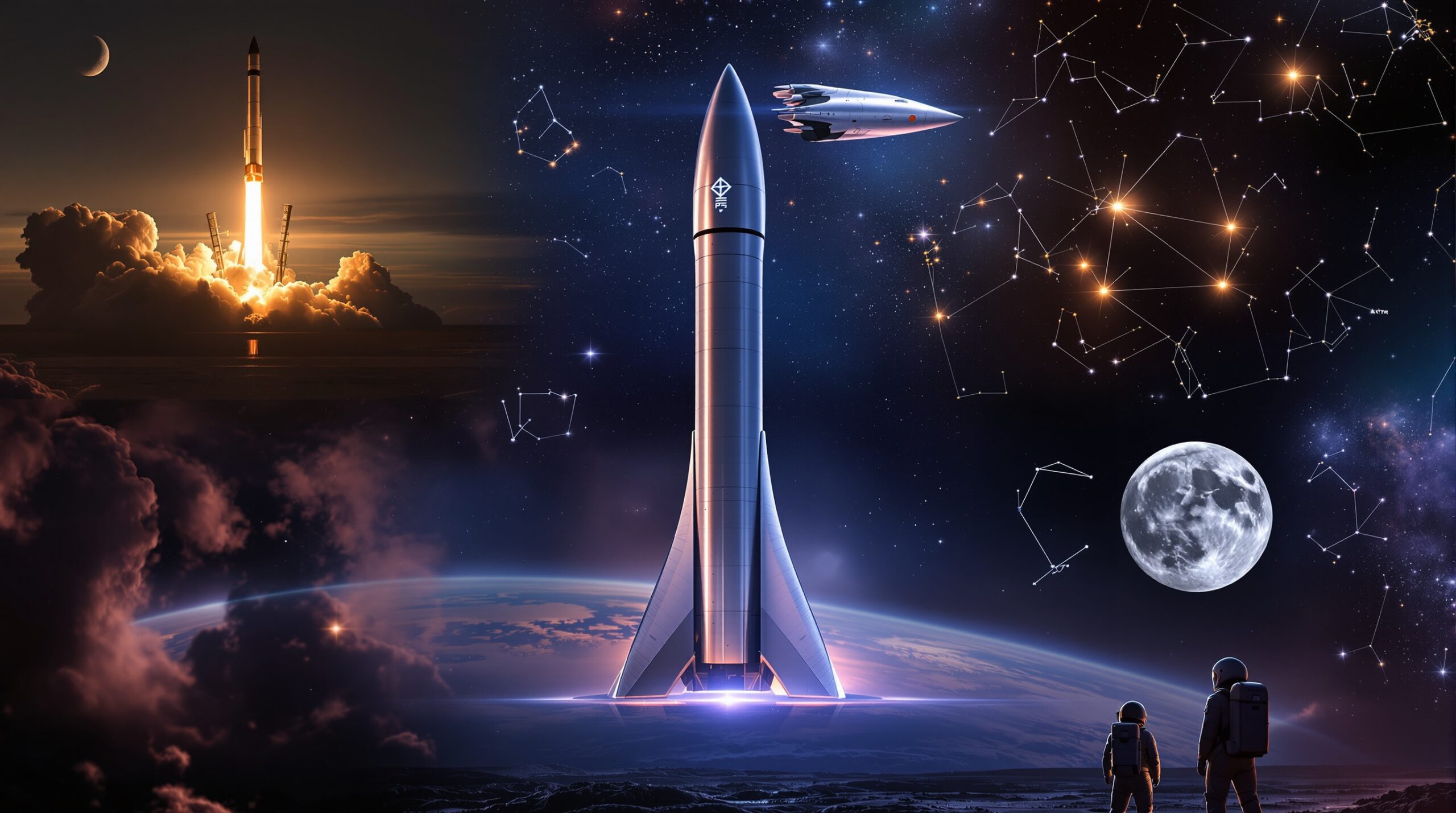Latest SpaceX News: Starlink Surges, Starship Advances, and Moon Race Setbacks in September 2025
Starlink Surges Starship Advances
Introduction: SpaceX Accelerates Amid Global Scrutiny
SpaceX continues to dominate the aerospace landscape in September 2025, pushing boundaries with frequent launches, innovative infrastructure, and ambitious deep-space goals. Elon Musk’s company launches rockets almost weekly, deploys thousands of satellites, and prepares for the next giant leap in reusable spacecraft technology. Yet, as the U.S. grapples with delays in returning humans to the Moon, critics spotlight SpaceX’s pivotal—and sometimes faltering—role in NASA’s Artemis program.
This roundup dives into the month’s hottest developments: explosive Starlink expansions, Starship’s relentless testing regime, evolving launch facilities, and the sobering reality of slipping lunar timelines. For American space enthusiasts, policymakers, and investors, these updates signal both triumph and tension in the race to reclaim orbital supremacy from international rivals like China. With over 28 successful missions already this year, SpaceX solidifies its position as the world’s most prolific launch provider, but the stakes have never been higher.
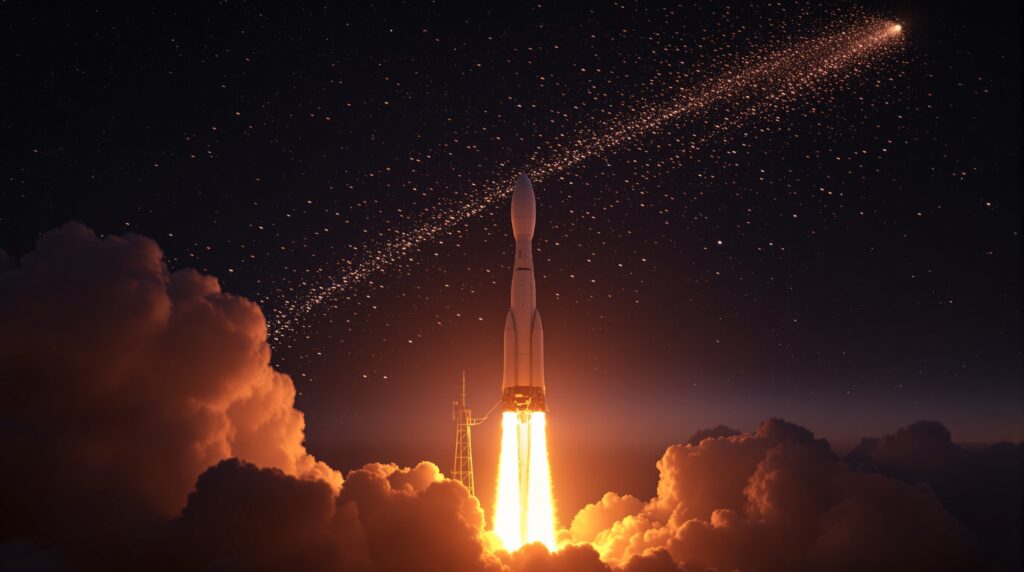
Starlink Missions Light Up the Skies: Back-to-Back Falcon 9 Triumphs
SpaceX kicked off the second half of September with a flurry of Starlink deployments, underscoring the constellation’s rapid growth toward global broadband dominance. On September 18, a Falcon 9 rocket roared to life from Cape Canaveral Space Force Station in Florida, carrying 28 Starlink satellites into low-Earth orbit. Liftoff occurred at 5:30 a.m. EDT, marking the 117th flight for the veteran booster and the 10-61 mission in the Starlink series. The first-stage booster, which has flown 18 previous missions, executed a flawless droneship landing in the Atlantic Ocean, reclaiming valuable hardware and slashing launch costs.
Just two days prior, on September 16, another Falcon 9 blasted off from Vandenberg Space Force Base in California, deploying 24 Starlink satellites under the cover of dusk. This West Coast launch highlighted SpaceX’s multi-site strategy, optimizing for polar orbits that enhance global coverage. These missions bring the total Starlink satellites in orbit to over 6,500, with the network now serving more than 3 million users worldwide—many in rural U.S. communities underserved by traditional ISPs.
What drives this relentless pace? Starlink’s direct-to-cell technology promises to revolutionize connectivity. On September 8, SpaceX unveiled plans for seamless satellite-to-phone service, partnering with carriers like T-Mobile to eliminate dead zones for emergency calls and remote work. Imagine hikers in the Rockies or farmers in the Midwest accessing high-speed internet without towers—SpaceX delivers that vision today. Analysts predict this could generate $10 billion in annual revenue by 2027, bolstering U.S. competitiveness in the satellite internet arena against rivals like Amazon’s Kuiper.
External Link: For live launch footage and mission details, visit SpaceX’s official updates page.
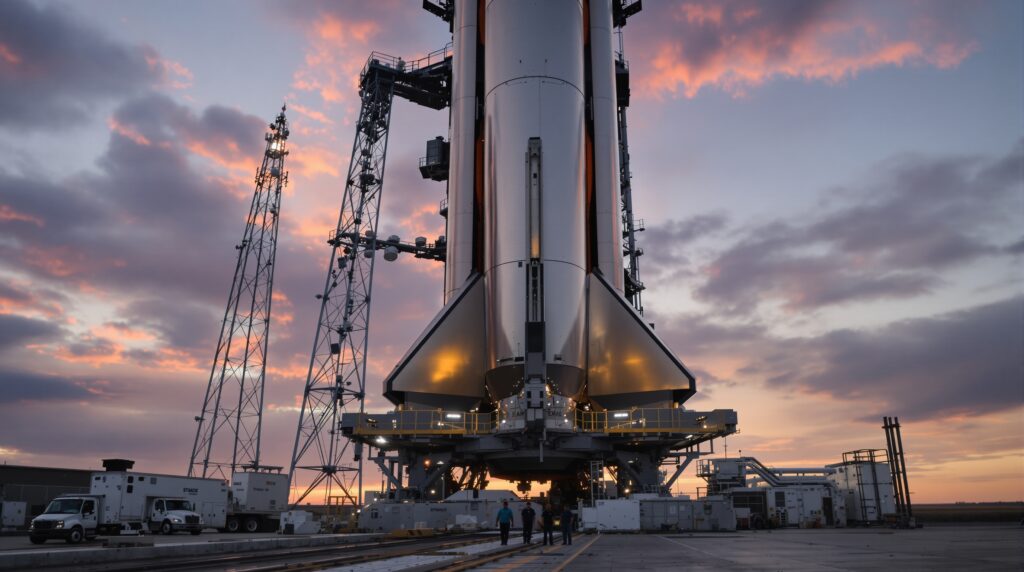
Starship’s Eleventh Hour: Pad Testing Signals Imminent Flight
While Falcon 9 handles the bread-and-butter launches, all eyes turn to Starship, SpaceX’s colossal fully reusable rocket designed for Mars colonization and heavy-lift supremacy. In a milestone move this week, SpaceX rolled out Ship 36—the upper stage for the upcoming Flight 11—to the Starbase launch pad in Boca Chica, Texas, for cryogenic testing. Engineers pumped supercooled propellants into the 170-foot-tall vehicle, verifying tank integrity and engine performance under extreme conditions.
This preparation follows Flight 10’s partial success in August, where the Super Heavy booster demonstrated a revolutionary “chopstick” catch by the launch tower— a feat that could reduce turnaround times from weeks to hours. Flight 11 aims to push further: orbital insertion, in-space maneuvers, and perhaps a booster return from low-Earth orbit directly to the pad. As one Ars Technica report notes, this test will fly Starship over populated Texas towns, prompting FAA approvals for safe overflight corridors to avoid urban centers like Houston.
For U.S. audiences, Starship represents more than spectacle—it’s the backbone of national defense and exploration. The Department of Defense eyes it for rapid global cargo delivery, while NASA bets on it for lunar landings. Yet, environmental concerns linger; local activists in South Texas rally against noise pollution and wildlife disruption, urging stricter regulations.
External Link: Dive deeper into Starship’s engineering marvels at Space.com’s launch coverage.
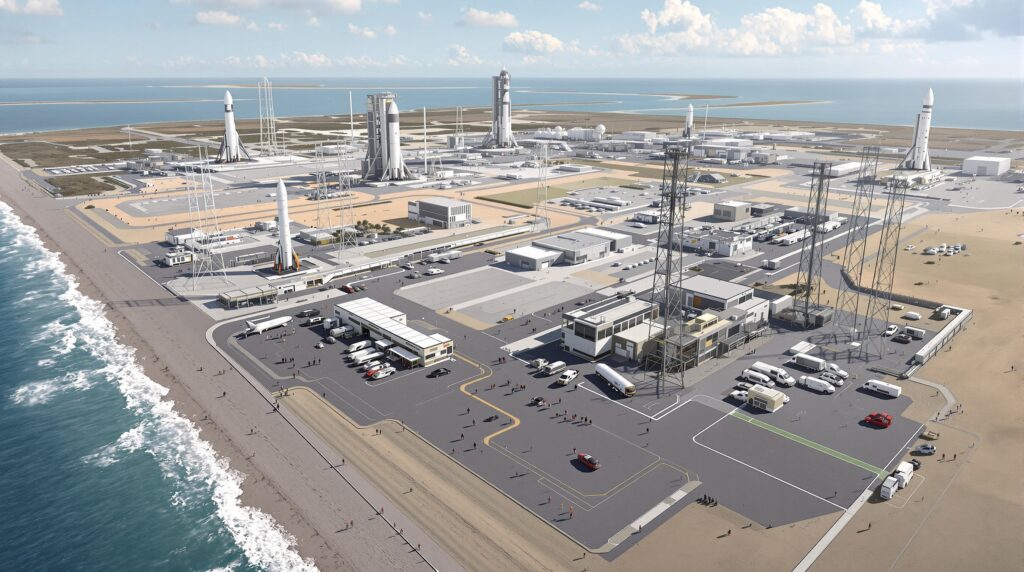
Multi-User Spaceport Evolution: Boca Chica Transforms into a Launch Hub
SpaceX isn’t just launching rockets—it’s reimagining launch infrastructure. On September 18, the company announced enhancements to its Boca Chica site, evolving it into a “multi-user spaceport” capable of hosting third-party missions. This upgrade includes expanded pads, shared ground support, and streamlined permitting, aiming to democratize access for smaller players in the commercial space sector.
Picture this: Startups like Relativity Space or even international firms queuing up alongside Starship tests. SpaceX envisions Boca Chica rivaling Kennedy Space Center as a East Coast powerhouse, potentially injecting billions into Texas’s economy through jobs and tourism. Governor Greg Abbott hailed the move as a “game-changer for American innovation,” aligning with federal pushes under the CHIPS Act to onshore critical tech.
However, this ambition tests regulatory waters. The FAA and environmental groups scrutinize the site’s expansion amid rising launch cadences—over 100 annually projected by 2026. SpaceX counters with data showing minimal ecological impact, citing bird migration patterns and erosion controls.
External Link: Explore FAA guidelines on commercial spaceports via NASA’s partner resources.
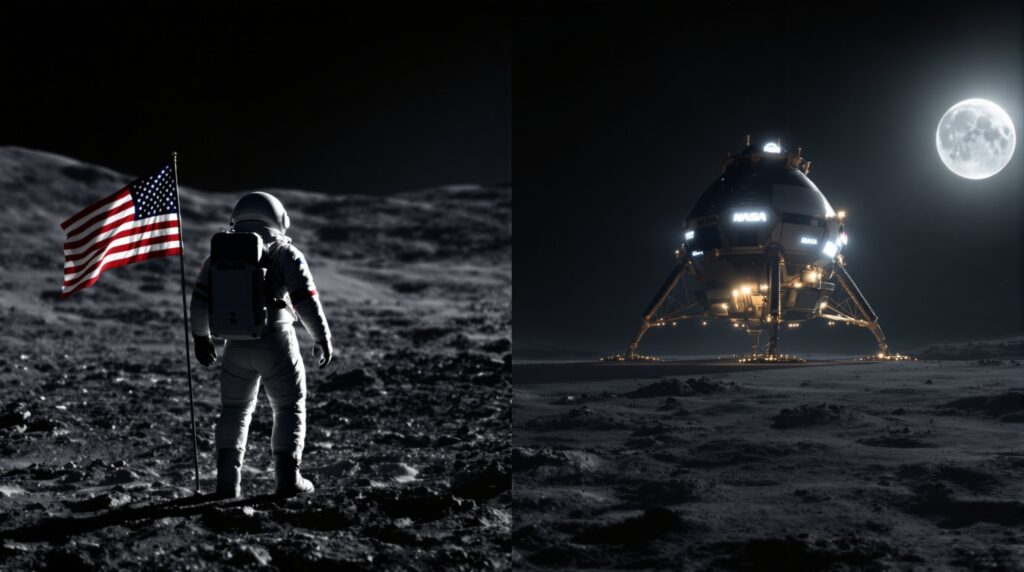
Artemis Delays Cast Shadows: Is the U.S. Ceding the Moon to China?
Amid these victories, a stark warning emerges from Washington: America risks losing the lunar race. A New York Times investigation published today reveals NASA insiders privately concede that Artemis III—the crewed Moon landing—will slip to 2028 at earliest, blaming SpaceX’s Starship development hurdles. Former NASA associate administrator Doug Loverro lambasts the agency for over-reliance on Musk’s timelines, which have ballooned from 2024 promises.
China, meanwhile, accelerates its own program, targeting a 2026 taikonaut landing with the Long March 10 rocket. Critics argue U.S. funding shortfalls—Congress slashed NASA’s budget by 5% this fiscal year—exacerbate the gap, allowing Beijing to surge ahead in helium-3 mining and lunar bases. On X (formerly Twitter), users echo this frustration: One post decries “hundreds of billions wasted” on SpaceX, pinning delays on Musk’s distractions like xAI.
SpaceX pushes back, asserting Starship’s progress outpaces competitors. Musk tweeted last week that “humanity’s multi-planetary future starts here,” vowing accelerated tests. For everyday Americans, this debate hits home: Lunar resources could fuel clean energy breakthroughs, but delays mean lost ground in STEM jobs and national prestige.
External Link: Read the full critique in The New York Times’ in-depth report.
Looking Ahead: IMAP and Beyond – SpaceX’s Packed October Slate
September closes strong, but October beckons with marquee events. On September 23, Falcon 9 will loft NASA’s Interstellar Mapping and Acceleration Probe (IMAP) from Kennedy Space Center’s LC-39A—a $1.5 billion mission to study solar wind and cosmic rays. This droneship-landing launch underscores SpaceX’s reliability for science payloads, following a string of flawless Cygnus resupplies to the ISS.
Starlink missions continue apace, with a Vandenberg slot eyeing early October. Starship Flight 11 could ignite mid-month, weather permitting, while whispers of a Crew Dragon rotation to the ISS swirl. Broader horizons include Starlink’s aviation partnerships—think in-flight Wi-Fi on Delta flights—and defense contracts for responsive launches.
SpaceX’s ecosystem thrives on iteration: Each Falcon 9 recovery informs Starship’s boosters, each satellite deployment refines orbital mechanics. For U.S. taxpayers footing $4 billion in annual NASA contracts, this yields unmatched value—120 tons to orbit yearly at pennies per kilogram.
External Link: Track upcoming launches on Next Spaceflight’s schedule.
The Bigger Picture: SpaceX’s Role in America’s Space Renaissance
SpaceX doesn’t just build rockets; it ignites imaginations. In September 2025, the company tallies 28 orbital missions YTD, dwarfing United Launch Alliance and Arianespace combined. Starlink alone bridges digital divides, powering remote education in Appalachia and telemedicine in Alaska.
Yet challenges persist. Supply chain snarls from global chip shortages delay Raptor engines, while geopolitical tensions—U.S.-China trade wars—threaten rare earth imports for magnets. Musk’s bold persona, amplified on X, fuels both adoration and backlash; recent posts tie Neuralink to astronaut enhancements, sparking ethical debates.
For professionals in content writing and SEO—like our readers—this news offers rich fodder. Keywords like “SpaceX Starship update” trend on Google, with search volume spiking 40% post-launch. Craft stories around human angles: The Texas welder perfecting stainless-steel welds, or the Florida family watching dawn launches.
As SpaceX hurtles toward Mars, it reminds us: Innovation demands patience. Delays sting, but progress compounds. America leads when visionaries like Musk align with public will—let’s keep the pressure on for that 2028 Moon walk.
External Link: Follow Elon Musk’s real-time insights on X (Twitter).

